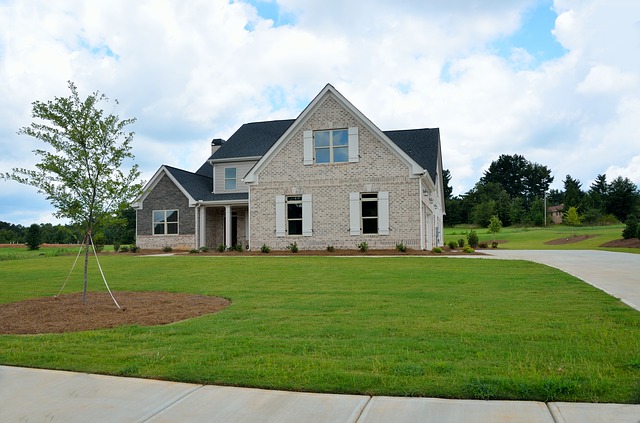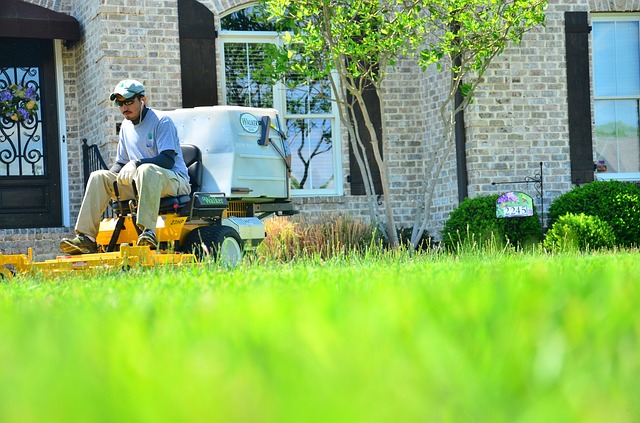A Healthy Lawn
A well-manicured turf grass creates a perfect cover for outdoor spaces in play fields, gardens, and front and backyards. But lush and healthy
lawns need tender care, which guarantees the healthy growth of the grasses. Are you thinking of re-installing your lawn or growing new patches of turf in your outdoor spaces? Here are insightful tips, which you should consider if you want to grow a healthy lawn in Texas.
Article sponsored by Residential Pressure Washing Company

Which is the right turf grass?
Turf cultivars vary in characteristics such as canopy density, leaf texture, shade tolerance, and drought tolerance – just to mention, but a few. As such, it’s advisable to ensure that your lawn gets turf grass that is tolerant to the local environment and climate. Texas has a sunny climate which
is relatively hot and less humid. Therefore, Buffalo, Bermuda, and Zoysia grasses provide the ideal match for such a locality.
- Buffalo grass is ideal for the Texas climate because it’s drought resistant and perfect for water conservation. Also, this species of turf is recommendable because it requires minimal fertilization and it’s less prone to pest attacks.
- Bermuda grass is the second-best choice. This species of turf is not only popular in Texas, but it is also vigorous, durable, inexpensive, and cold and weed-resistant.
- Zoysia is also ideal for Texas-based lawns because it is a low-maintenance turf, which can grow well in many varying environments. This species is also tolerant of considerable changes in temperature, sunlight, and humidity.
Which is the right soil for your lawn?
After carefully selecting your turf grass, you’ll have to ensure that you prepare the right media or soil for your lawn. The right soil should have sufficient nutrients, proper aeration, and drainage. If you’ll start with bare soil, it’s prudent to incorporate sufficient compost, which is well decomposed to provide additional plant nutrients and improved aeration and water retention. All these improvements will better the health of your turf during its growth.

How do you install the turf?
If you are implementing a complete lawn renovation or creating a new patch of lawn, then you should start by spraying Glyphosate herbicide on your chosen ground. The herbicide eliminates weeds without causing contamination. After a week or two, all the vegetation will be gone and you can make a fine till on the soil to a depth of 3 to 5 inches. You should rake the tilled area to grade and smooth it while also removing debris, rocks, and roots. Thereafter, seed the bed or install the sod evenly to get uniform coverage. Seeding in fall is ideal because the cool fall temperatures promote germination and better growth.
Routine lawn maintenance after turf installation
After preparing the bed, choosing the ideal turf cultivars, and installing your turf grasses, there is a need to perform regular turf maintenance to ensure that you get healthy lawns. Here are the most crucial lawn maintenance practices, which can help you to grow healthy lawns.
Lawn Mowing
Mowing is a basic lawn care practice meant to ensure that your grass cover is maintained at a height that improves the health and aesthetic appearance of the turfgrass. Mowing also helps in getting rid of noxious weeds while improving the density and uniformity of the grass. The practice also improves aeration because it helps in getting rid of thatches within the grass. Proper mowing should be done regularly at a height of 3.5 inches. The grass clippings can be recycled to provide organic nutrients to the turf while excess clippings can be raked out to prevent thatching.
Irrigation
Like most other ornamental plants, turf grass requires regular watering in the dry seasons. Adequate irrigation helps in reducing the susceptibility of the turf cover to weed invasion and pest infestation in the dry seasons. However, in spring irrigation should be reduced or delayed to encourage deep-root development before the dry seasons.
Fertilization
Slow-release nitrogen is the most important fertilizer for lawns. Fertilization is ideal in cases where grass undergoes seasonal damage and stress due to traffic, pest infestation, or the vagaries of weather. An application rate of 1 pound of fertilizer per 1,000 square feet is the most preferable rate for sufficient fertilization.
Aeration and Dethatching
Grass clippings from mowing practices and leaves and debris often accumulate on growing lawns causing dense thatches that limit aeration within the grass cover. Similarly, compaction experienced from human or machine traffic can lead to poor aeration within the soil. As such, there is a need for regular raking to de-thatch the grass and core aeration, which extracts cores of soil to improve water percolation, thatch removal, and soil aeration.
Bottom-line
You’ll need to do a proper bed preparation, a careful turf cultivar selection, and soil mix preparation to get the best results from your sod installation or grass seeding activities. Once you have a perfect turf cover, you’ll need to do the proper and regular maintenance of your lawns by mowing, irrigating, fertilizing, dethatching, weeding, and aerating to get healthy lawn growth.
Thank you for visiting our site and for looking around. We hope that you are able to find some answers to questions you may have or learn a few good tips and tricks. If you have any questions please contact us today. Also if you have any great tips of your own be sure to share them with us. One last thing we do ask is that you visit our sponsor Pressure Washing Frisco